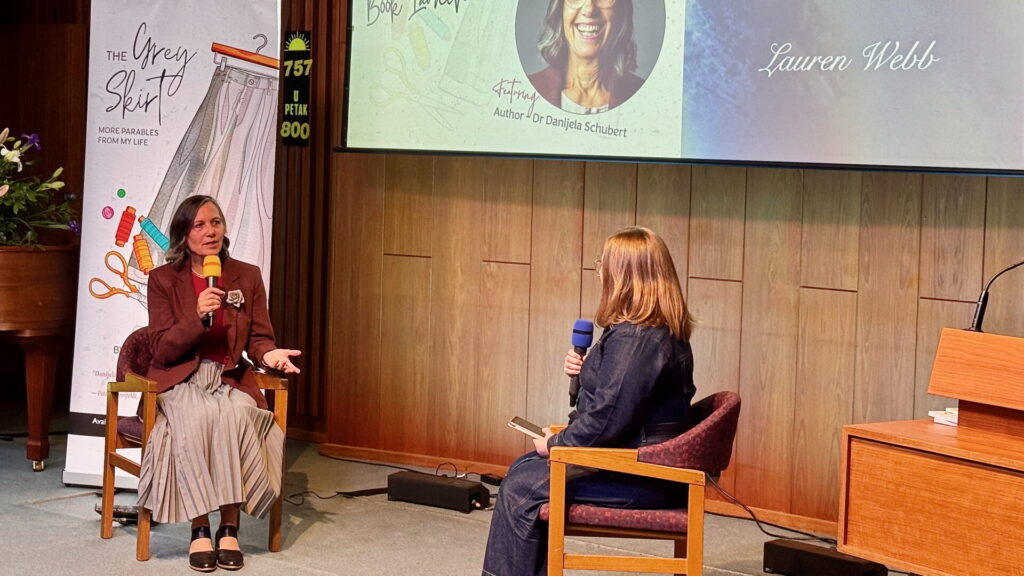Parable: The wise and foolish virgins
“Afterward the other virgins came also, saying, ‘Lord, Lord, open to us!’ But he answered and said, ‘Assuredly, I say to you, I do not know you.’ Watch therefore, for you know neither the day nor the hour [b]in which the Son of Man is coming” (Matthew 25:11-13).
As a graffiti artist, I’ve always believed when it comes to being creative, it’s not an ability; it’s an identity. Jesus, the Creator of the universe, is known to use imagination to help His audience understand the kingdom of heaven through the art of storytelling.
Jesus creatively understood His craft, not as some skill He developed during His ministry; it came out of His identity as Creator God. He was a natural fabricator of comparison, which is why He began His parables by saying “the kingdom of heaven is like . . . ” The parables of Jesus came from His creative style of conversation, by painting two separate worlds together as a life-sketch into their reality—between the kingdom of God and the kingdom of man. This creative approach is seen through various parables found in the Gospels. Particularly the story of the Ten Virgins. One of the most fascinating similarities about being a graffiti artist and the story of the Ten Virgins is that storytelling is the starting point.
As a local church pastor, I often drive around the city on my way to visit church members, to find the best location to paint. Location is everything. If you find a “sweet-spot” (legally) where people can easily see your artwork, you have a larger audience of spectators—particularly the people I want to speak to, which are other graffiti artists. The audience of Jesus in Matthew 25 were Jewish. His parables came out of His own sketchbook, the written Word. In the graffiti world, we call our sketchbooks “The Black Book”. It’s fundamental to the artist, to master their craft.
The graffiti artist is correctly known as a “writer”. The artist deals solemnly with different font styles, words and letters. (Technically a non-graffiti artist is a “street artist” who basically paints pictures or images). Christianity holds a similar connection to the belief that we build our lives on the written word. The word graffiti comes from two derivatives of the Italian word graffito, which means “scratch” or “incised inscription”, and the Greek word grapho, which means “to write”. Graffiti art is concerned about what is written.
What does graffiti have to do with the ten virgins?
Let’s have a look at the story found in Matthew 25:1-13 and see its parallels with graffiti art, in the hope of inspiring you to be more creative in how you bear the light.
On the wedding night, the ten virgins were split down the middle in equal halves: the wise and the foolish ladies. Based on their knowledge and relationship with the Bridegroom they all had lamps. The difference between them was, at midnight, the five wise had extra oil and the other five were foolish because they ran out of oil. As a result, the foolish virgins were not prepared to meet the Bridegroom.
Metaphorically the oil and lamps are two significant elements to Christianity—to people being light bearers. The lamp symbolises God’s written Word of truth and the oil represents the Holy Spirit. Mathematically, this equation of no oil equates to having no light—without oil, the light can’t burn. The overarching theme for this parable is the importance of taking proper preparations for Jesus’ soon return; of having the oil of the Holy Spirit—the active agent of light—and the lamp of truth, which is crucial for our access to the kingdom.
Most graffiti writers who paint illegally paint after midnight. They’re hoping to have a fully finished work materialise by morning. But to do this, they need to have brought enough paint. Otherwise, they will look “foolish” when a half created artwork appears in the light of day.
An astute graffiti artist has three major creative elements that help master their craft: style, identity and message.
1. Style
There are two types of graffiti writers. There are “toys” and “kings”. A toy is considered an amateur, based on their poor execution style, lack of skill and originality. As for the foolish virgins, they failed to execute light. They lacked the skill of trimming their lamps in order to have extra oil. Consequentially they were unable to enter into the wedding banquet.
A king is a respected and crowned artist in the graffiti community based on their creative style. Two competences that make a great writer is their “Black Book” skills and how they skilfully handle the aerosol can of paint. This is what made the five virgins wise; they invested in both their creative style, by learning the art of gaining extra oil (see verses 14-29) and by correctly handling the Word of truth.
2. Identity
The creative style of graffiti art usually tells others who you are and where you’re from. It’s heavily associated with the city or place you grew up in. This is important because it informs what the artist stands for and why they exist. In my former years, I represented my home city of Porirua, in Wellington, New Zealand. That location of origin has now shifted towards God’s kingdom, not created by human hands.
It’s disrespectful of an artist to copy another artist’s original work. The foolish virgins appeared pure and lamp-like but tried to replicate the light by asking the other virgins to give them their identity when they ran out of oil. The more copies you make, the more you will lose resolution. The Bridegroom did not recognise them. The wise drew from an endless supply of oil. The identity and originality of the wise comes from “a letter from Christ . . . written not with ink but with the Spirit of the living God, not on tablets of stone but on tablets of human hearts” (2 Corinthians 3:3).
3. Message
I like to entertain the thought that God was the first tagger or graffiti artist who wrote on a wall in Daniel 5 to convey a message for all to see. Your message is your identity, and your identity determines your originality. There will always be toys and kings. Authentic Christians bear a signature of a Spirit-filled life—their spray cans are full, to take them through the night, grounded by the black book, that produces an additional supply of the Holy Spirit.
Creative Living
We as a church may have lost our identity as innovators, as imaginative, creative, original thinkers, and risk takers. Jesus is a sure thing, but another thing is for sure: we are called to create; we are created to be creative, to reach a wider audience. We are masterpieces of our own God-given craft through our identity in Christ, who is the Maker. Our message shall remain pure, not lacking originality of style and delivery through God’s wisdom to guide our decisions, while living life outside the box.
I have taken on the approach to spray up a message on the walls of my current city for all to see: that the King of all kings is coming. I call them “pulpit walls” and “great news galleries”. The kingdom of heaven is my message spoken in the language of the common people of graffiti. Our story shall become the modern-day parable that they may personally know the Bridegroom, who has access through the gates into the city.
May our creative living always begin with “the kingdom of heaven is like . . . ”
Tulaga Aiolupotea is a pastor and chaplain in Invercargill, South New Zealand Conference.







